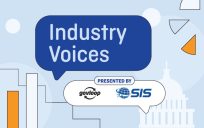 Buy-in is critical to making organizational change happen, especially when you’re building support for a new technology initiative in a government organization. This is a timely challenge as the internet, big data and other tools have made markets increasingly competitive, pushing many organizations to adopt new technology such as enterprise content management or data analytics software to remain relevant. These initiatives can seem like obvious solutions to the decision makers, but it’s not always easy to get everyone on board.
Buy-in is critical to making organizational change happen, especially when you’re building support for a new technology initiative in a government organization. This is a timely challenge as the internet, big data and other tools have made markets increasingly competitive, pushing many organizations to adopt new technology such as enterprise content management or data analytics software to remain relevant. These initiatives can seem like obvious solutions to the decision makers, but it’s not always easy to get everyone on board.
It’s understandable when people resist organizational change. Today, employees are increasingly overworked—a recent survey from Paychex reported that nearly 73 percent of employees who experience burnout attribute it to a stressful workload. Many people simply may not have the bandwidth for something new. Change, particularly when it comes to technology, disrupts people’s day to day routines and forces them to engage in active and often energy demanding ways.
Here are some techniques to make change an exciting opportunity – not another task to be managed.
Build Positive Momentum for Change
User groups are a great tool to build camaraderie around a project. Hosting regular meetings for staff allows you to share best practices and offer advice. Loudoun County, Virginia, has seen a lot of success with an internal user group. They meet quarterly, and what began as a few people meeting to brainstorm project ideas eventually grew into a 50-plus person regular meeting. They have asked vendors and partners to donate giveaways to encourage participation, and each meeting features a success story from another department. They say that this has helped them build cross-departmental connections and create a culture of support.
Similarly to user groups, lunch and learn workshops can be a great way to build support. Often times, change can make people angry and upset because they don’t understand what’s happening or why. Traveling workshops enable you to explain and demonstrate in a very specific way what the solution will look like for your audience. As Maureen Reynolds, county clerk at Tompkins County, New York, says, “You can have the best software in the world, but if people aren’t comfortable with it, they won’t use it.”
To make a workshop effective, start by developing your specific message for each group. Maybe you divide your workshops by department. So, you demonstrate to HR how their new electronic records will be stored, and how they can find and retrieve HR files. Speak their terms and bring the meetings to them. After the meeting is over, make sure you’re following up with any relevant training guides, screenshots or other resources so they can remember what they learned.
Celebrate Your Successes
Once your initiative gains some traction, consider celebrating your successes by creating more resources that will help to build even more momentum. Who says case studies have to be externally facing? Why not do some internal promotion, too? The City of Boca Raton, Florida, sends a monthly email showcasing some of the great uses of their document management software. They’ll highlight a new process they’ve automated since the last email and the results they’ve seen. This has brought multiple benefits:
- They’ve been able to recognize the hard work of others and show appreciation for their supporters, which helps them to build champions
- It’s sparked ideas in other departments of ways to use the software
- It has reinforced to executive management that this project has been making a difference in the organization
You can share these case studies at user group meetings or workshops, too. It’s a great way to show the broad support for the initiative and get people excited about the impact it’s making.
Engage with Your Colleagues
Though the workplace is often perceived as a logic-driven, transaction-based environment, it is still occupied by humans—and humans are driven by emotions. When leaders drive change in the organization, they must consider the impact it will have on people.
It’s great to say that we want to use technology to improve processes in our organization, but what does an automated accounts payable process really mean for an AP clerk who has to process purchase orders on a daily basis? A department manager who has to approve them? The CFO who needs oversight over the entire process to make sure corporate policies are being followed?
We can help others see what this project entails—as well as the impact it has—by posing real-life scenarios of what daily life will look like after the project is complete. Pick a few activities that everyone dreads, select a few common pain points, and then share how the project will stop these headaches.
For example, with accounts payable, perhaps those pain points are filing papers or approving requests. In this case, replacing paper forms with electronic ones—which can be automatically filed in an electronic repository—eliminates manual document filing and prevents approvals from falling through the cracks, ensuring that corporate standards are adhered to.
As a change leader, it’s your job to help others in your organization to visualize what their future will look like after the technology has been implemented. The hardest part of this can be putting yourself in someone else’s shoes, but thinking through how change will affect your colleagues can help you navigate potential conflict.
Provide a Runway for Onboarding
Often, technology systems allow you to set up a demonstration environment or test system. These allow users to test out the solution without worrying about breaking something or accessing confidential information.
As people begin to explore the new system, you want to provide a runway for onboarding. Start by breaking down the transition to the new system in steps. Train users on bite-sized pieces of the system and allow extra time for users to adjust before moving on. For example, many customers implementing electronic records management will scan documents into their new system, but keep the paper files for a few weeks. This may be a helpful safety net for those who are struggling to adapt. Start by scanning archived files and showing your colleagues how to access them, then later have the discussion about how to handle active documents and incoming content.
Eventually, you’ll need to move people over to the new process and system, so set reasonable timelines for the transition.
By giving people room and time to experiment in “sandboxes,” staged adoption, and planned stop/start, you’re able to let the skeptics come to terms with what’s happening without being forceful and rigid. Colleagues will appreciate that you’ve taken time to consider what they will need to change, and are conscientious in the way that you’re handling the transition.
Ready for Takeoff
Many times, leaders don’t communicate opportunities for their organization clearly or widely. When they do, they’re often shocked to see how quickly change can happen.
That’s because choice motivates people to be far more committed to driving change than being told they have to do it. Instead, find a message that resonates with people who are passionate about making their organization better, harnesses their enthusiasm and empowers them to drive change.
In every technology initiative, success is determined by how effectively people adopt and embrace the change to how they do their jobs. The more thoughtful consideration you give to the process of change, the more likely it is that your initiative will stick, and achieve the desired results. Writes Gartner Research Director Elise Olding, “We fear what we don’t understand. It feels ‘safer’ to stay in a place that is uncomfortable, than to move towards an unknown state. Increasing the certainty of what the end-state looks like can decrease this fear. It’s not necessary to get into all the details, but frame the journey from where people are today to where they will be tomorrow.”
With a clear idea of who needs to change what, you’re better equipped to figure out appropriate steps to take to encourage adoption.
Melissa Henley is a GovLoop Featured Contributor. She is Director of Customer Experience at Laserfiche, an enterprise software company that has served the public and private sectors for over 30 years. Customers are at the heart of all Melissa does, and her passion is around connecting people to content that can have a genuinely positive impact on their lives. Melissa brings over 20 years of marketing experience across multiple industries, including government, finance, and higher education. Read her posts here.




Thanks for a great article Melissa! Your light is very insightful.